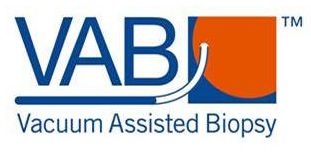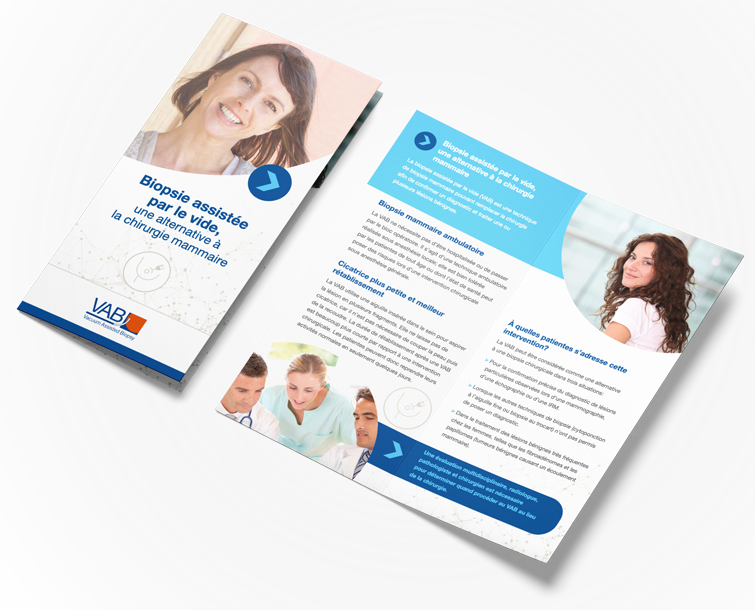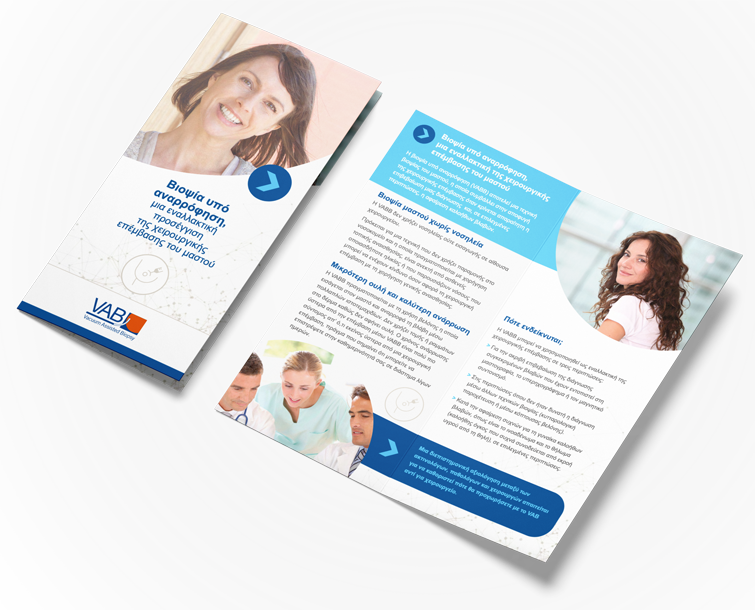 We understand that the diagnosis of any breast condition can be a worrying and traumatic time for anyone.
We understand that the diagnosis of any breast condition can be a worrying and traumatic time for anyone.
Finding a benign tumour can be a scary thing especially if you do not know your options and are left fearing the unknown. We’ve gathered together some of the available options for women who have been diagnosed with a benign breast tumour, giving you all the information you need to make an informed choice.
The best type of biopsy for you may depend on a variety of factors as well as your own personal medical history. These include: the location and size of the tumour, whether there is more than one, whether there is risk of cancerous cells and your own personal preference.1 In some cases, where the doctor can be very certain about the diagnosis, a breast biopsy may not be required at all.
If you are currently concerned about a breast lump that is undiagnosed, to put your mind at ease and to be safe, it is important that you go to your GP and seek medical advice. Below are a number of different options for treatment of benign breast lumps.
Needle biopsies
Your doctor may suggest treatment using a needle biopsy procedure. With this particular biopsy method a needle is put through your skin so that a sample of the material in the breast lump can be removed and sent to the laboratory for analysis. Unless the lump is very easy to feel through the surface of your skin, image guidance is required to help the clinician reach the right part of your breast with the needle. When an ultrasound machine is used this is called ultrasound-guided biopsy.2 Stereotactic mammography can also be used for guidance. This is where mammograms taken from different angles guide the doctor to the lump in order to obtain a sample that will be analysed.2 Alternatively an MRI or CT scan may be used to assist in locating the lump.1 Local anaesthetic is injected to numb the area before the sample is taken in order to prevent you any pain or discomfort.3
Fine needle aspiration (FNA) is a type of breast biopsy in which a very thin, hollow needle – thinner than one used for taking a blood sample – is inserted into the breast lump and a small sample of fluid is withdrawn into the attached syringe.1 FNA does not usually leave a scar.
Core needle biopsy is when a larger, hollow needle is used to withdraw several cylinder-shaped samples of the breast tissue.2 This usually requires the needle to be inserted around 3-6 times.2 Core needle biopsy does not usually leave a scar.2 A small metal clip may be placed inside the breast at the site of the biopsy in case any more tissue needs to be removed. This is not harmful to your body, even though it sounds quite strange. If surgery is performed the clip will be removed at this time.2
If surgery is not required, eg the lump is benign, the clip can safely remain in the breast and will then serve as an indicator in future investigations that the lump with the clip in it has already been biopsied in the past, thus preventing repeat analysis of the same benign lump.
Both core needle and fine needle biopsies remove a smaller amount of tissue than a surgical biopsy and for this reason may be less accurate.2 It is possible to get a ‘false negative’ result from these types of biopsy, which means there is cancerous cells present but the sample selected was too small to detect them.2
Vacuum assisted breast biopsy (VABB) a hollow needle and a vacuum is used to withdraw a sample from the breast lump. This is a newer form of breast biopsy designed to overcome some of the less favourable aspects of core needle biopsy or fine needle aspiration. In vacuum assisted biopsy the needle only needs to be inserted once and a larger sample of material can be withdrawn than with fine needle or core biopsy.2 The needle is inserted into the breast lump and a vacuum sucks the tissue out. A rotating cutter is then used to collect the sample and this makes VABB safer to use close to delicate areas such as the nipple, chest wall, skin or arm pit as there is no forward movement of the needle, it also helps ensure a good sample is obtained even in solid breast lumps.4 With VABB the clinician can move the probe or needle around inside the breast lump taking up to 8-10 samples until they are certain the whole area has be thoroughly checked.2
Overall, VABB gives a more accurate diagnosis and can completely remove some smaller lesions under ultrasound guidance.4 As with core needle biopsy a small clip may be inserted into the breast at the time of the biopsy to mark the spot in case further treatment is required or to prevent unneccesary repeat analysis in the future should the lump prove benign.2
Surgical biopsies
This is when the surgeon removes all or part of the lump and often a layer of the surrounding tissue when performing a surgical biopsy.1 Image guidance can be used to locate the lump. Using this guidance, the surgeon will insert the needle and then put a wire through it in order to guide them to the area for sampling.2
Incisional biopsy a local anaesthetic is used to numb the area and you are given an injection to make you feel drowsy.2 The surgeon uses a scalpel or knife to make a cut in the skin and remove a tissue sample from the lump.2 False negative results are still possible with this method. There will be a small scar and you may need longer to recover than with needle biopsies.2
Excisional biopsy uses surgery to remove the entire breast lump and a rim of normal tissue or margin, as well.2 The advantage of excisional biopsy is that it is the most accurate way to be sure a lump does not have any cancer cells.2 In many cases this form of invasive biopsy sample is not necessary and needle biopsies present a suitable and effective option.
Every open surgery carries risks of complications such as infection and bleeding.Your clinician will recommend a minimally invasive technique such as needle biopsy whenever possible.2 Your own preferences, personal circumstances and medical history will play an important role in helping the doctor recommend the best methods for you. It is important to ask questions and let the clinician know how you feel about the different options.
For more information on breast options and breast health in general, take a look around our website.
References
- American Cancer Association 2016 Breast Biopsy accessed 04/03/2017 @ https://www.cancer.org/cancer/breast-cancer/screening-tests-and-early-detection/breast-biopsy.html
- Breastcancer.org Biopsy. Last updated October 2015 accessed 04/03/2017 @ http://www.breastcancer.org/symptoms/testing/types/biopsy
- NHS choices Breast lumps – Diagnosis. Last reviewed 13/08/2014 accessed 04/03/2017 @ www.nhs.uk/Conditions/Breast-lump/Pages/Diagnosis.aspx
- Park H,L, and Kim L,S,. 2011. The Current Role of Vacuum Assisted Breast Biopsy System in Breast Disease. J Breast Cancer [online] 14(1), pp1-7 [viewed online 23/01/2017] available at https://www.ncbi.nlm.nih.gov/pmc/articles/PMC3148506/











